Department of Biotechnology, University Institute of Engineering & Technology,
Kurukshetra University, Kurukshetra, Haryana, India.
Corresponding author email: sunitakhatak2019@gmail.com
Article Publishing History
Received: 19/10/2021
Accepted After Revision: 29/12/2021
Achyranthes aspera belongs to Amaranthaceae family and is found in barren and arid regions in India. The plants are categorized as a weed in Ceylon, Asia, Africa and Australia but tribal communities in India have known its benefits for topical treatments of many ailments from Vedic civilizations. The leaf, stem and root aqueous extracts were used for monometallic zinc and bimetallic copper-zinc nanoparticle synthesis and testing antibacterial activity against the diseases causing drug resistant bacterial pathogens viz. Escherichia coli, Staphylococcus aureus, Pseudomonas aeruginosa and Bacillus subtilis using standard methods. Microbes confirmed that the plant contains bioactive compounds that exhibit measurable antimicrobial activity against standard pathogenic bacteria.
The nanoparticle synthesis was confirmed by visual color change and UV spectroscopic evaluation of solution. The different plant parts showed different absorption peak at 328 nm,298 nm for roots and stem while 395 nm for leaves in case of zinc nanoparticles while bimetallic Copper-Zinc nanoparticles resulted in peaks at 402.0,400.8 and 402.0 nm for leaf, root and stem respectively. The synthesized nanoparticles of zinc and copper zinc from all three plant parts were further tested for their as cariogenic potential against as cariogenic pathogen Streptococcus mutans which resulted in significant zones of inhibition. The plant has antimicrobial literature using organic solvent extracts where researchers reported negligible activity of different plant parts while nanoparticle synthesis resulted in potent zone of inhibition. The bimetallic Cu-Zn will enhance its potential to be used in mask and PPE kits for safety concerns.
A. Aspera, Antimicrobial, Nanoparticles, Phyto-Chemical, Zone of Inhibition.
Khatak S, Wadhwa N, Singh H, Jain P. Phytogenic Synthesis of Nanoparticles from the Extract of Achyranthes aspera-A Panacea for Dental Health Care. Biosc.Biotech.Res.Comm. 2021;14(4).
Khatak S, Wadhwa N, Singh H, Jain P. Phytogenic Synthesis of Nanoparticles from the Extract of Achyranthes aspera-A Panacea for Dental Health Care. Biosc.Biotech.Res.Comm. 2021;14(4). Available from: <a href=”https://bit.ly/3EthCfN“>https://bit.ly/3EthCfN</a>
INTRODUCTION
The present investigation deals with the synthesis of monometallic Zinc and bimetallic Copper- Zinc nanoparticles using leaf, stem and roots as plant part from Achyranthes aspera L. belonging to Amaranthaceae family and is a considered invasive weed species. It is perennial stiff erect herb of 2m height commonly known as “Apamarga” and is available in India as roadside weed (Figure-1) (Jain et al. 2006). It bears elliptical, ovate, and broad leaves. The inflorescence is 8-30 cm with single red or white colored flowers. The root paste has anti-fertility attributes. The decoction is prescribed to terminate pregnancy while the ethanolic extracts have been reported to have spermicidal activity. The methanolic extracts of leaves have antitumor activity. The shoots and seeds were commonly used to treat asthma; hypertension and diabetes (Zafar 2009; Paul et al. 2010).
The leaf extracts have hypoglycemic thyroid stimulating properties. Biological or green route synthesis has overcome the toxicity concern which has to be taken into account while chemically synthesizing nanoparticles. Methods like sol gel, gas spraying, and pulsed laser deposition, wet chemical and electrochemical methods have inherent limitations which limits them in nanoparticle processing. The primary benefit of plant-based nanoparticle synthesis is its non-toxic mechanism. Zinc nanoparticles have wide range of application in cosmetics, paintings, glass industry, and packaging industry. The chemical methods implemented for zinc nanoparticle synthesis needs to have special expertise and authenticated instruments which make the process more sensitive and expensive (Pandey et al. 2014; Jadoun et al. 2021).
In comparison, combustion method is single step method which can be carried out under normal conditions without much expertise. Moreover, the process is eco-friendly. Zinc nitrate used as precursor is economical in comparison to gold and silver nanoparticles synthesis. Zinc oxide is most commonly used metal oxide for gas sensing. Large surface area results in fast response and has multipurpose applications due to corrosion resistant potential in biomedical healthcare. Economic benefits and high corrosion resistant property make zinc nanoparticles synthesis more versatile than silver and gold nanoparticle synthesis (Narayana et al. 2018).
Although literature is studded with synthesis of nanoparticles using Achyranthes aspera but major focus was on synthesis of silver and gold. It was assessed the toxicity and stability of gold nanoparticles synthesized using Achyranthes, which in turn was pH dependent. The visual color change from dark brown to dark purple revealed the nanoparticle synthesis which was further confirmed by a peak at 540 nm. The synthesized nanoparticles were in the range of 50-80 nm and had spherical morphology as confirmed by SEM and TEM.
Cytotoxicity assay resulted that a concentration of 100µg/ml is applicable to be used for nanomedicine development. It was +reported rapid green synthesis of silver nanoparticles using aqueous leaf extract of Achyranthes aspera (Amaladhas et al. 2013; Tripathi et al. 2016). The disc diffusion method was used to test sensitivity of bacterial strains against standard pathogens similar to present study. Praveena et al. (2014) reported silver nanoparticle synthesis using silver nitrate and plant leaves extract of Achyranthes aspera. The antibacterial activity represented a significant advancement in nano-material field. The silver nanoparticles synthesized from this plant displayed 100% efficacy against Aedes aegypti (Praveena et al. 2014; Sharma et al. 2021).
The present investigation exploited all three plant parts of Achyranthes aspera in the nanoparticle synthesis. In addition to zinc, bimetallic Cu-Zn nanoparticles were also synthesized using all three plant parts and tested against all standard pathogens. Significant zones of inhibition were obtained which attracted the potential of bimetallic nanoparticles over monometallic particles. Methanolic extracts were prepared using roots as plant part to test against four standard pathogens for testing potential of roots alone as cariogenic alternative. Dilutions were prepared using DMSO and inhibition zones were obtained using standard agar well diffusion assay (Perez et al. 1990). Cu-Zn nanoparticles have been previously made from toddy palm plant which exhibited antibacterial, antitumor and antioxidant activity (Merugu et al. 2021).
Figure 1: Achyranthes aspera plant from UIET, Kurukshetra University Campus.
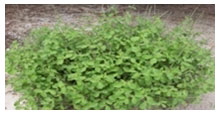
MATERIAL AND METHODS
Plant leaves, stem and roots of Achyranthes aspera were collected from roadside of university campus itself and identified from Botany Department of Kurukshetra University of Kurukshetra, Haryana, India. The various human pathogenic microorganisms were purchased from Microbial Type Culture Collection (MTCC): Institute of Microbial Technology (IMTECH), Chandigarh; which included two gram-positive bacteria: Staphylococcus aureus (MTCC-3160) and Bacillus subtilis (MTCC-121) and two Gram-negative bacteria: Pseudomonas aeruginosa (MTCC -2295) and Escherichia coli (MTCC-5704), along with one cariogenic bacterium namely Streptococcus mutans (MTCC-497). The test tubes were incubated at 4 ºC in the refrigerator for further studies.
The leaves stem and roots of healthy Achyranthes aspera plants were selected from road side to be used as reducing agents using zinc nitrate salt and copper sulphate penta hydrate to synthesize monometallic zinc and bimetallic copper zinc nanoparticles. The leaves and roots were rinsed and washed with distilled water after prior wash with tap water 3-4 times. The thoroughly washed plant materials were chopped and grounded to fine powder after drying. 10 gram of powder was soaked in 100 ml de-ionized water in one 250 ml flask. The flask was kept on top of hot plate for 30 to 45 minutes at 80 °C. The green colored extract from leaves, stem and brown colored extract from roots were filtered using Whatman filter paper no-1. The filtrate was used for synthesis of nanoparticles separately for different plant parts (Le et al. 2020).
Single step economical method was employed for zinc oxide nanoparticles synthesis under sterile conditions. Aqueous plant extracts from all three plant parts namely leaves, root and stem were prepared along with 100 ml of aqueous solution of zinc nitrate hexahydrate (0.1 M) and mixed in a ratio of 1:2 (PE: Zinc nitrate hexahydrate solution). Zinc nitrate solution (50ml) was added drop wise into of plant extract (12.5ml) and solution was incubated in water bath at 700C for complete one hour.
Visual observation via color change of original solution to cream colored solution and taking absorption maxima at the wavelength range of (300-600) confirmed the synthesis of zinc nanoparticles. The nanoparticles were extracted by heating on hot plate till a dried extract is obtained and then further heated at 70°C using heating mantle until get converted to fine powdered form. The nanoparticles were further kept in hot air oven for one hour at 110 °C for calcinations (Ramesh et al. 2014).
Approximately 5 gram of copper sulphate pent hydrate (20 mM) and 6 gram of zinc nitrate (20 mM) were dissolved in 90 ml of triple de-ionized water and incubate at ambient temperature in water bath till solution become homogeneous. The dissolved copper zinc solution (90ml) was added drop wise into plant extract (10ml) and incubated in water bath at 70 0C for complete one hour. Visual observation via color change of original bluish colored solution to dark green colored solution and taking absorption maxima at the wavelength range of (300-600) confirmed the synthesis of Cu-Zn nanoparticles. The antimicrobial activities of plant extracts were evaluated by agar well diffusion assay using standard protocol (Perez et al. 1990; Minal and Prakash 2016).
RESULTS AND DISCUSSION
Antimicrobial Propensity: Antimicrobial analysis basically explains the measurement of zones of inhibition which depicts the cleared zones where plant extract has shown its inhibitory action. The monometallic zinc and bimetallic copper zinc nanoparticles synthesized using three different plant parts viz. leaf, stem and roots from Achyranthes aspera at three different volumes of extracts 50, 75 and 100 µl.
Against Gram negative strains: Zones of 13, 16 and 17mm were observed at three volumes of extracts using zinc nanoparticles while prominent zones of greater size of 31, 32 and 34 mm were obtained using bimetallic copper zinc nanoparticles using leaf as plant part against E. coli, a gram-negative pathogen. The difference in monometallic and bimetallic zones was remarkable and depicts the efficacy of bimetallic nanoparticles over monometallic even when most of the researchers have reported the selective inhibition of only gram-positive bacteria preferred over gram-negative strains. While in comparison to leaf extract, stem was exploited to synthesize zinc and copper zinc nanoparticles produce equivalent zones of 14, 16, 18 mm in zinc nanoparticles and again showing dominant zones of inhibition of 34, 34 and 36 mm using bimetallic copper zinc nanoparticles (Bordbar et al. 2020).
Similarly roots resulted in zones of 13,17and 18mm using zinc nanoparticles while the copper zinc nanoparticles producing zones of bigger size of 29, 31 and 33 mm again showing influence of two nanoparticles working together against E. coli (Fig-2). The zones have been explained and described in correspondence to three different concentrations of 50, 75 and 100 µl respectively. Metallic nanoparticles hold huge application in detection of pathogenic bacteria.
A group of researchers synthesized zinc nanoparticles using zinc nitrate hexa- hydrate similar to present investigation along with zinc chloride and zinc acetate and further reported antimicrobial efficacy of these nanoparticles. The UV visible spectral analysis revealed peaks at 278, 374 and 378nm respectively which confirms the synthesis was a success. The antimicrobial assay resulted in higher zones of inhibition against E. coli, and S. aureus using agar well diffusion assay which corroborate well with our studies (Getie et al. 2017; Bordbar et al. 2020).
Similar results were observed considering another gram-negative bacteria P. aeruginosa but the zone size was lesser in diameter in comparison to E. coli. Zinc nanoparticles synthesized using leaves resulted in zones of 14, 16, and 18 mm while in comparison copper zinc bimetallic extracts produced zones of 19, 24, and 25 mm at three different volumes of extracts. Zinc nanoparticles have been found to be very effective against cancer less lines in multiple studies.
Similar pattern was observed using stem as reducing agent in nanoparticle synthesis of zinc giving zones of 13, 16 and 17 mm while bimetallic particle extract resulted in zones of 21, 25 and 27 mm at three different extract volumes. While root as plant part were used to synthesize monometallic zinc and bimetallic copper zinc nanoparticle resulted in similar zones with very minor differences of 14, 17 and 22mm using zinc nanoparticles and zones of 21, 23 and 25 mm using bimetallic nanoparticles (Chandran et al. 2019).
The zones of inhibition are although greater than what observed using simple methanolic extracts of plants and aqueous extracts which did not result in any zone of inhibition but are significant enough to be considered as potent agents against P. aeruginosa as shown in Table-1 and 2. The methanolic extract of the plant has been found to exhibit strong anti-tyrosinase activity in vitro (Sinan et al. 2020).
Table 1. Antimicrobial Activity of Zinc nanoparticles against selected pathogens.
| Pathogen | Volume of Extract (in µl) | Zone of Inhibition (in mm) | ||
| Leaf | Stem | Root | ||
| E. coli | 50 | 13 | 14 | 13 |
| 75 | 16 | 16 | 17 | |
| 100 | 17 | 18 | 18 | |
| B. subtilis | 50 | 14 | – | 15 |
| 75 | 16 | 14 | 18 | |
| 100 | 18 | 16 | 20 | |
| S. aureus | 50 | 13 | 14 | – |
| 75 | 17 | 16 | – | |
| 100 | 18 | 17 | 20 | |
| P. aeruginosa | 50 | 14 | 13 | 14 |
| 75 | 16 | 16 | 17 | |
| 100 | 18 | 17 | 22 | |
Table 2. Antimicrobial Activity of Cu-Zn nanoparticles against selected pathogens.
| Pathogens. | Volume of extract (in µl) | Zone of Inhibition (in mm) | ||
| Leaf | Stem | Root | ||
| E. coli | 50 | 31 | 34 | 29 |
| 75 | 32 | 34 | 31 | |
| 100 | 34 | 36 | 33 | |
| B. subtilis | 50 | 28 | 25 | 27 |
| 75 | 30 | 26 | 33 | |
| 100 | 32 | 28 | 35 | |
| S. aureus | 50 | 27 | 35 | 35 |
| 75 | 30 | 36 | 37 | |
| 100 | 36 | 38 | 38 | |
| P. aeruginosa | 50 | 19 | 21 | 21 |
| 75 | 24 | 25 | 23 | |
| 100 | 25 | 27 | 25 | |
Figure 2: Bimetallic Cu-Zn nanoparticles synthesized using roots of Achyranthes aspera at
three different volumes against four standard pathogens.

Against Gram Positive strains: In consideration of gram-positive bacterial pathogens the literature revealed that nanoparticles have been more inhibitory in action as compared to gram negative bacteria. In the present investigation Bacillus subtilis and Staphylococcus aureus were taken as standard pathogen to study the propensity of both monometallic and bimetallic nanoparticles as inhibitory agents. In case of B. subtilis zones of 14, 16, and 18 mm were reported considering leaves for zinc nanoparticles while zones of 28, 30, and 32 mm were produced using bimetallic copper-zinc nanoparticles (Beg at al. 2020).
Taking stem as plant parts equivalents zones of 14 and 16 were observed at only two higher concentrations of 75 and 100 µl while lesser concentration of 50 µl was unable to produce any zone of inhibition. In comparison bimetallic stem used copper-zinc nanoparticles resulted in significant zones of 25, 26, and 28 mm at three different volumes of extracts of 50, 75 and 100 µl respectively (Fig-3,4). Roots comes out to be most significant plant part against Bacillus subtilis resulting in zones of 15,18 and 20mm using zinc nanoparticles while zones of 27,33 and 35 respectively at three different volumes of extracts. The roots of the plant have been reported in literature to consist of ample of phytochemicals to be considered for its prominent activity against bacterial pathogens. Moreover, the phytocompounds present in the plant have been found to display strong anti-cancer properties (Beg at al. 2020).
Figure 3: Bimetallic Cu-Zn nanoparticles synthesized using leaves of Achyranthes aspera at
three different volumes against four standard pathogens.
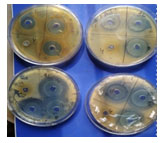
Figure 4: Bimetallic Cu-Zn nanoparticles synthesized using stem of Achyranthes aspera at
three different volumes against four standard pathogens
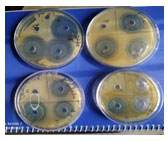
Staphylococcus aureus has a long history of being a prominent pathogen in majority of disease outbreak in India and world. The resistant strains developed are considerably resistant to almost most of the antibiotics developed in regard. The medicinal plants need to be exploited by scientific community to fight against such resistant strains emerging in day-to-day life. The zinc nanoparticles and bimetallic nanoparticles synthesized using leaves resulted in zones of 13, 17, 18 mm and 27, 30 and 36 mm respectively at three different volumes of 50, 75 and 100 µl. While stem parts used to synthesize zinc and copper zinc nanoparticles resulted in zones of 14, 16 and 17 mm and zones of 35, 36 and 38 mm respectively at three volumes of extracts (Fig-4).
In comparison to these two plant parts the root extracts again proved their efficiency over other plant parts resulting in zones of 20mm at only at 100 µl considering zinc nanoparticles, while zones of much bigger size area of 35, 37 and 38mm using copper- zinc nanoparticles. The results in investigating the propensity of roots to be exploited against S. aureus are the need of the hour. Zinc oxide nanoparticles were synthesized using flower, leaves and stem plant extracts from Passiflora (Manokari and Shekhawat 2016). The bioreduction completes in 2 hours with resulting in strong peaks at 332 nm from leaves, 296 nm from stem and 326 nm from flower extracts similar to present research outputs. The process can be further scaled up for large scale synthesis of nanoparticles (Duraimurugan et al. 2019).
The zinc nanoparticles synthesized are affected by the type of leaf extract used and have superior photocatalytic activity for Methylene Blue dyes degradation which can be implemented as photo catalyst in waste water treatment in textile industry. A group of researchers evaluated structural optical and photo catalytic properties of zinc oxide nanoparticles obtained using by simple plant extracts of Achyranthes aspera and C. quianensis as reducing agent using zinc nitrate as precursor (Duraimurugan et al. 2019).
Figure 5: Mono metallic – Zn nanoparticles synthesized using leaf root, stem and thorns of
Achyranthes aspera at three different volumes against S. aureus.
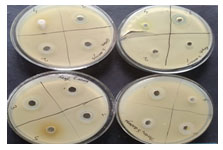
Cariogenic propensity: The literature survey and the ancient knowledge of using roots by tribal people in gum pain and as toothbrush have inspired us to explore the potential of leaf, stem and root extracts of zinc and copper zinc nanoparticles against a cariogenic pathogen namely Streptococcus mutans.
Although the zones were not in a range as obtained against S. aureus but considerable activity was reported resulting in zones of 18 mm and 20mm at two different volumes of 50 and 100 µl using leaf and stem while a bigger zone was observed in comparison to both plant parts of 24 mm at a higher concentration of 100 µl using roots as plant part (Table-3) in zinc nanoparticles. While in comparison bimetallic copper zinc nanoparticles resulted in zones of 23 mm and 25 mm using leaves, zones of 22 mm and 24 mm using stem which were almost comparable (Jaisankar et al. 2020).
While roots as plant part resulted in zones of 19 mm against Streptococcus mutans at 50 µl volume of extract while a zone of 26 mm at 100 µl volume of extract using bimetallic copper zinc nanoparticle. A group of researchers evaluated antibacterial activity of Achyranthes aspera extracts against Streptococcus mutans taking stem and roots as plant part at four different concentrations of 2.5%, 5%, 7.5 % and 10 %which in turn resulted in significant zone of inhibitions (Yadav et al. 2016).
In case of roots MIC assay for root, a minimum zone of 14 mm was observed at 2.5% at a concentration of 100 µl and 250 µl, while a maximum zone of 21 mm at 10% and a volume of 250 µl. While in case of shoots a minimum zone of 12 mm was observed at a concentration of 2.5% at a volume of 100 µl, while a maximum of 16 mm at 10% and at a volume of 250 µl in comparison to standard chlorhexidine which resulted in a zone of 19 mm at 2% and at a volume 10 µl. Both root and stem resulted in a MIC value at 2.5% concentration. The plant’s juice is applied on the gums to relieve the pain and is being used since immemorial by people of India and Nepal as a toothbrush after thorn removal (Jaisankar et al. 2020).
A group of researchers reported the major key route of these effective zones of inhibitions or antibacterial activity is owned by different phytochemicals like alkaloids and tannins and further revealed tannin being water soluble the aqueous extract from roots of plant is due to tannins components (Kumar et al, 2009). Ethyl acetate extracts of Achyranthes aspera resulted in significant zones of inhibitions against S. mutans in comparison to other solvent system and thus have cariogenic potential (Jebashree et al. 2011).
A group of researchers elucidated the importance of medicinal plant extracts in cariogenic activity as an important natural alternative to prevent microbial growth in oral infection disease. They investigated nineteen medicinal plants using leaves and fruit extracts against four cariogenic bacteria (Trivedi et al. 2018; Jaisankar et al. 2020).
The extracts were prepared using organic solvents methanol, ethyl acetate, hexane and distilled water against L. acidophillus, L. casei, S. mutans, and S.aureususing agar well diffusion method. The plant proves out to be a natural alternative to prevent oral diseases (Trivedi et al. 2018).
Table 3. Antimicrobial activity of Zinc and Cu-Zn Nanoparticles against
Cariogenic pathogen (Streptococcus mutans)
| Pathogen (S. mutans) | Volume of extract (in µl) | Zone of Inhibition (in mm) | ||
| Leaf | Stem | Root | ||
| Zn Nanoparticles | 50 | 18 | 18 | – |
| 100 | 20 | 20 | 24 | |
| Cu-Zn Nanoparticles
|
50 | 23 | 22 | 19 |
| 100 | 25 | 24 | 26 | |
Confirmation of Zinc oxide and Cu-Zn nanoparticles: The visual change in the color of the colloidal solution from greenish to light cream color confirmed the synthesis of zinc oxide nanoparticles which was further confirmed using UV–spectral analysis in range of (300-600) which resulted in an optical absorption band peak at 328 nm and 298 for roots and stem while 395 nm for leaves for zinc nanoparticles.
Zinc nanoparticles were synthesized using leaf extracts of Hibiscus rosa-sinensis using different concentrations of zinc nitrate. They observed a peak at 269 nm which confirmed the zinc nanoparticle synthesis (Sindhura et al. 2013). While zinc nitrate was used to synthesize zinc nanoparticles using olive (Olea europaea) leaf extracts (Hashemi et al. 2010; Saeed et al. 2021).
The zinc nanoparticle synthesis was confirmed by UV-visible spectroscopy observing a peak at 370 nm and further revealed spherical particles with average size of 41 nm, which well corroborate with our results. The color change associated with Cu-Zn Nanoparticle is displayed from blue colored solution to reduced dark green colored solution (Figure-6) and absorption peaks at 402.0, 400.8 and 402.0 for leaf, root and stem respectively further confirmed the synthesis of Cu-Zn nanoparticles not been an alloy but as one solution giving one peak similar to Minal and Prakash results (Minal and Prakash 2016) (Figure-7,8,9). The Zinc nanoparticles synthesized from this plant have been found potent to eliminate poultry pathogenic bacterium (Saeed et al. 2021).
Figure 6: Bimetallic Cu-Zn nanoparticles using plant leaves showing green
colored solution in comparison to Cu-Zn solution
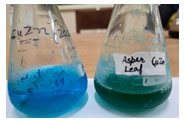
Figure 7: Bimetallic Cu-Zn nanoparticles synthesized using plant
leaves with absorption peak at 402.0nm.
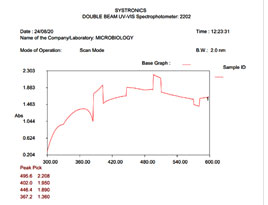
Figure 8: Bimetallic Cu-Zn nanoparticles synthesized using
plant stem with absorption peak at 402.0nm.

Figure 9: Bimetallic Cu-Zn nanoparticles synthesized using
plant roots with absorption peak at 400.8nm.

The structure (Morphology) and size of nanoparticle synthesized was determined using SEM analysis for Zinc nanoparticles. Mixed surface morphology was observed using SEM images by 9 Hitachi VP-SEM SU1510. The Zinc oxide nanoparticles showed agglomeration with mixed morphology structure with irregular shapes (Fig-10).
Figure 10: SEM images of zinc nanoparticles agglomerates
observed in root (a) and stem(b) using Achyranthes aspera.
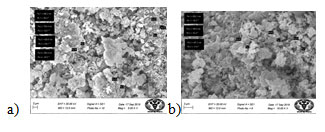
CONCLUSION
he findings of the present investigation exploited a roadside weed having immense potential as cariogenic alternative along with suitable material to synthesize nanoparticles. All plant parts even inflorescence was used to act as antimicrobial agent. Evaluation of antimicrobial activity of asper against B. subtilis, E. coli, P. aeruginosa and S. aureus gave significant zones of inhibition. It can be assumed that the Zn nanoparticles have a higher antimicrobial activity even at the lower concentration.
Lower concentrations of plant extracts result in reduction of zinc ions but cause aggregation of nanoparticles as shown in SEM images. The present research depicted the susceptibility of bacterial pathogens to nanoparticles synthesized using asper. The zinc nanoparticles mixed with textiles were used to combat the viral infection in present pandemic and bimetallic Cu-Zn that will further enhance the potential to be used in mask and PPE kits for safety concerns.
ACKNOWLEDGEMENTS
This study was technically supported by the University Institute of Engineering and Technology, Kurukshetra, India.
Conflict of Interests: Authors declare no conflicts of interests to disclose.
REFERENCES
Amaladhas, T.P., Usha, M., and Naveen, S., (2013). Sunlight induced rapid synthesis and kinetics of silver nanoparticles using leaf extract of Achyranthes aspera L. and their antimicrobial applications. Mat. Lett, 4(10), 779-785, DOI: 0.5185/amlett.2013.2427.
Beg, M. and Athar, F., (2020). Pharmacokinetic and molecular docking studies of Achyranthes aspera phytocompounds to exploring potential anti-tuberculosis activity. J Bacteriol Mycol Open Access, 8(1), pp.18-27.
Bordbar, M.M., Tashkhourian, J. and Tavassoli, A., et al., (2020). Ultrafast detection of infectious bacteria using optoelectronic nose based on metallic nanoparticles. Sensors and Actuators B: Chemical, 319, p.128262. DOI:10.1016/j.snb.2020.128262.
Chandran, S., Patgiri, B., Bedarkar, P., et al., (2019). Anticancer activity of Yashada Bhasma (bioactive nanoparticles of zinc): A human pancreatic cancer cell line study. Ayu, 40(1), p.58, DOI:10.4103/ayu.AYU_239_17.
Duraimurugan, J., Kumar, G.S., and Maadeswaran, P., et al. (2019). Structural, optical and photocatlytic properties of zinc oxide nanoparticles obtained by simple plant extract mediated synthesis. Journal of Materials Science: Materials in Electronics, 30(2), 1927-1935, DOI:10.1007/s10854-018-0466-2
Getie, S., Belay, A., and Chandra, R.A.R, (2017). Synthesis and characterizations of zinc oxide nanoparticles for antibacterial applications. J Nanomed Nanotechno, 8(4), DOI:10.4172/2157-7439.S8-004.
Hashemi, S., Asrar, Z., and Pourseyedi, S., et al., (2016). Green synthesis of ZnO nanoparticles by Olive (Olea europaea). IET nanobiotechnology, 10(6), 400-404.
Jadoun, S., Arif, R., Jangid N.K., et al. (2021). Green synthesis of nanoparticles using plant extracts: a review. Environ Chem Lett, 19, 355–374, DOI:10.1007/s10311-020-01074-x
Jain J.B., Kumane S.C., and Bhattacharya, S., (2006). Medicinal flora of Madhya Pradesh and Chattisgarh–a review.
Jaisankar A.I., Somasundaram, J. and Ezhilarasan, D., et al., (2020). Can Achyranthes Aspera Be Used In Dentistry?. Indian Journal of Forensic Medicine & Toxicology, 14(4).
Jebashree, H.S., Kingsley, S.J., and Sathish, E.S., et al. (2011). Antimicrobial activity of few medicinal plants against clinically isolated human cariogenic pathogens—An in vitro study. International Scholarly Research Notices, 1-6, DOI: 10.5402/2011/541421.
Kumar, S.S., Venkateswarlu, P., and Rao, V.R., et al. (2013). Synthesis, characterization and optical properties of zinc oxide nanoparticles. International Nano Letters, 3(1), 1-6, DOI: 10.1186/2228-5326-3-30.
Le, N.T.T, Nguyen, D.H., and Nguyen, N.H., et al., (2020). Silver nanoparticles ecofriendly synthesized by achyranthes aspera and scoparia dulcis leaf broth as an effective fungicide. Applied Sciences, 10(7), 2505, DOI: 10.3390/app10072505.
Manokari, M., and Shekhawat, M.S., (2016). Production of Zinc oxide nanoparticles using extracts of Passiflora edulis Sims. World Scientific News, 2(47), 267-278, DOI: 10.1155/2018/5263814.
Merugu, R., Gothalwal, R., Deshpande, P.K., et al., (2021). Synthesis of Ag/Cu and Cu/Zn bimetallic nanoparticles using toddy palm: Investigations of their antitumor, antioxidant and antibacterial activities. Materials Today: Proceedings, 44, pp.99-105, DOI: 10.1016/j.matpr.2020.08.027.
Minal, S.P., and Prakash, S., (2016). Cu-Zn and Ag-Cu bimetallic nanoparticles as larvicide to control malaria parasite vector: a comparative analysis. IEEE region 10 Humanitarian technology conference (R10-HTC), 1-6.
Narayana, A., Azmi, N., and Tejashwini, M., et al., (2018). Synthesis and Characterization of Zinc oxide (ZnO) Nanoparticles using mango (magnifera indica) leaves. International Journal of Research and Analytical Reviews, 5(3), 432-439.
Pandey, B., Bajpai, P., and Singh, S., et al., (2014). Study of physiochemical analysis of Achyranthes aspera extracts. International Journal of Pharmaceutical Sciences and Research, 5(8), 3378.
Paul, D., De, D., and Ali, K.M., et al., (2010). Comparative study on the spermicidal activity of organic solvent fractions from hydroethanolic extracts of Achyranthes aspera and Stephania hernandifolia in human and rat sperm. Contraception, 81(4), 355-36, DOI: 10.1016/j.contraception.2009.09.001 .
Perez, C., (1990). Antibiotic assay by agar-well diffusion method. Acta Biol Med Exp, 113-115.
Praveena, V.D., and Kumar, K.V., et al., (2014). Green synthesis of silver nanoparticles from Achyranthes aspera plant extract in chitosan matrix and evaluation of their antimicrobial activities. Indian Journal of Advances in Chemical Science, 2 (3), 171-177.
Ramesh, P., Rajendran, A., and Meenakshisundaram, M.,
(2014). Green synthesis of zinc oxide nanoparticles using flower extract cassia auriculata. Journal of NanoScience and NanoTechnology, 2 (1), 41-45.
Saeed, S., Nawaz, S., and Nisar, A., et al., (2021). Effective fabrication of zinc-oxide (ZnO) nanoparticles using Achyranthes aspera leaf extract and their potent biological activities against the bacterial poultry pathogens. Materials Research Express, 8 (3), p.035004, DOI: 10.1088/2053-1591.
Sharma, A., Tripathi, P. and Kumar, S., (2020). One-pot synthesis of silver nanocomposites from Achyranthes aspera: An eco-friendly larvicide against Aedes aegypti L. Asian Pacific Journal of Tropical Biomedicine, 10(2), p.54.
Sinan, K.I., Zengin, G. and Zheleva-Dimitrova, D., et al., (2020). Qualitative phytochemical fingerprint and network pharmacology investigation of Achyranthes aspera Linn. extracts. Molecules, 25(8), p.1973, DOI:10.3390/molecules25081973.
Sindhura K.S., Prasad, T.N.V.K.V., and Hussain, O.M., (2013). Synthesis and characterization of phytogenic zinc nanoparticles and their antimicrobial activity. In International Conference on Advanced Nanomaterials & Emerging Engineering Technologies, 87-90, DOI: 10.1007/s13204-013-0263-4.
Tripathi, A., Kumari, S., and Kumar, A., et al., (2016). Toxicity evaluation of pH dependent stable Achyranthes aspera herbal gold nanoparticles. Applied Nanoscience, 6 (1), 61-69, DOI: 10.1007/s13204-015-0414-x.
Trivedi, P., Chauhan, J., and Ishnava, K., (2018) In vitro assessment of inhibition potential of ethanomedicinal plants against cariogenic bacteria. Acta Sci Microbiol, 1(6), 43-49.
Yadav, R., Rai, R., Yadav, A., et al., (2016). Evaluation of antibacterial activity of Achyranthes aspera extract against Streptococcus mutans: An in vitro study. Journal of advanced pharmaceutical technology & research, 7(4), 149, DOI: 10.4103/2231-4040.191426.
Zafar R (2009) Medicinal Plants of India, CBS publishers & distributors, 1-15.


